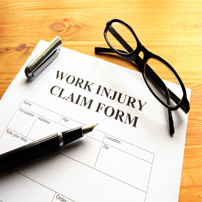Workplace Slip, Trips and Falls
May 4, 2018 Workplace slips, trips and falls can result in an array of serious injuries, some of which are so disabling that employees are forced to file workers’ compensation claims and to take time off from their jobs to seek out continued medical treatment. More often than not, these injuries are entirely preventable as long as employers and supervisors take the necessary steps to rid their workplaces from known hazards and prioritize putting effective safety programs in place.
Workplace slips, trips and falls can result in an array of serious injuries, some of which are so disabling that employees are forced to file workers’ compensation claims and to take time off from their jobs to seek out continued medical treatment. More often than not, these injuries are entirely preventable as long as employers and supervisors take the necessary steps to rid their workplaces from known hazards and prioritize putting effective safety programs in place.
Workers across all different industries are at risk for particular situations that can result in injuries and death. Although data shows that workers in the construction industry are at an especially high risk for serious or lethal injuries from falls, employers in every industry need to take precautions to protect the workers. According to the National Institute for Occupational Safety and Health (NIOSH) slips, trips and falls are most likely to occur as a result of certain situations. The ten most common scenarios that cause injury or death are:
- Indoor irregularities in walking surfaces
- Outdoor irregularities in walking surfaces
- Contaminants on floors (e.g. grease, water, newly waxed surfaces),
- Insufficient lighting
- Inclement weather conditions, like ice and snow,
- Handrails and steps
- Stepstools and ladders
- Clutter, loose cords and other objects on floor spaces
- Improperly using runners and other kinds of floor mats, and:
- Pipes and drains that leak water or other liquids
There are also numerous injuries that are commonly attributed to slips, trips and falls. NIOSH reports that the most commonly affected body parts are the head, hip, back, arm (wrist, elbow), leg (knee, foot, ankle) and shoulder. Some of the most common injury types that individuals sustain are abrasions, cuts, bruises, contusions, sprains, strains, and bone fractures. And in 2016, OSHA documented 384 falls (in the construction industry alone) that resulted in worker fatalities.
One particularly effective way to inhibit worker falls is to ensure that areas are object and clutter-free. Additionally, since many falls occur at-height –when workers are on ladders, steps, scaffolding, roofs, etc – all industrial and safety equipment must comply with federal safety standards and be adequately maintained. OSHA has specific requirements for all different types of equipment like ladders, scaffolding, and more. Maintenance not only means conducting repairs or getting replacement equipment/tools when necessary, but also performing routine inspections to stay on top of any issues.
There are lots of other steps that employers can take to prevent slips, trips and falls from happening. The Occupational Safety and Health Administration (OSHA) recommends that employers install or provide some of the following solutions so that they are readily available for supervisors and workers:
- Wall-mounted spill pads (used to soak up contaminants and other liquids);
- High visibility caution signs to indicate hazards;
- Traction padding or highlighting especially hazardous areas (such as building entrances, curbs, steps, etc.);
- Fall protection for workers who are performing jobs at-height or are in other situations that require it;
- Cord covers or retractable cord holders for exposed wiring, and:
- Slip resistant floors where necessary (e.g. floor pads, materials with traction an/or mats)
Although the burden of responsibility for protecting workers from known dangers falls mostly on the employer, that doesn’t mean it’s not critical for employees to be cautious and responsible when they’re at work. OSHA has documented certain human factors that contribute to slips, trips and falls. Some of the most dangerous situations include when a worker is moving or carrying heavy objects, taking a shortcut (which includes being in a hurry), being distracted (e.g. using a cell phone) or generally inattentive, and having certain medical or physical conditions related to balance and vision.
Employers are legally obligated to keep workers – and workplaces – safe. Having an effective work safety and health program means being on top of the potential dangers before something bad happens, like a completely preventable injury or death. One way to do this is to make sure that employers train workers on all slip; trip and fall hazards so they can better avoid them. Employers also should encourage workers to report all observable hazards, as well as keeping in mind that it is illegal to take any sort of retaliatory action against workers who report hazards of file complaints about safety violations.
If you were injured in a workplace slip, trip or fall because of an unsafe or improperly maintained condition – such as broken equipment or an unmarked wet floor – you may be able to file a Workers’ Compensation claim. For people who are injured in the scope of employment, workers’ compensation benefits can help to replace lost wages and pay for medical bills. If you think you may be eligible for workers’ compensation benefits, please contact a representative at our firm who can help answer your questions.
Allentown Workers’ Compensation Lawyers at Galfand Berger, LLP Represent Victims of Slip and Falls at Work
If you were injured in a workplace slip and fall, please contact our Allentown Workers’ Compensation lawyers at Galfand Berger. With offices located in Philadelphia, Bethlehem, Lancaster, and Reading, we serve clients throughout Pennsylvania and New Jersey. To schedule a consultation, call us at 800-222-8792 or complete our online contact form.
 Google Screened
Google Screened
